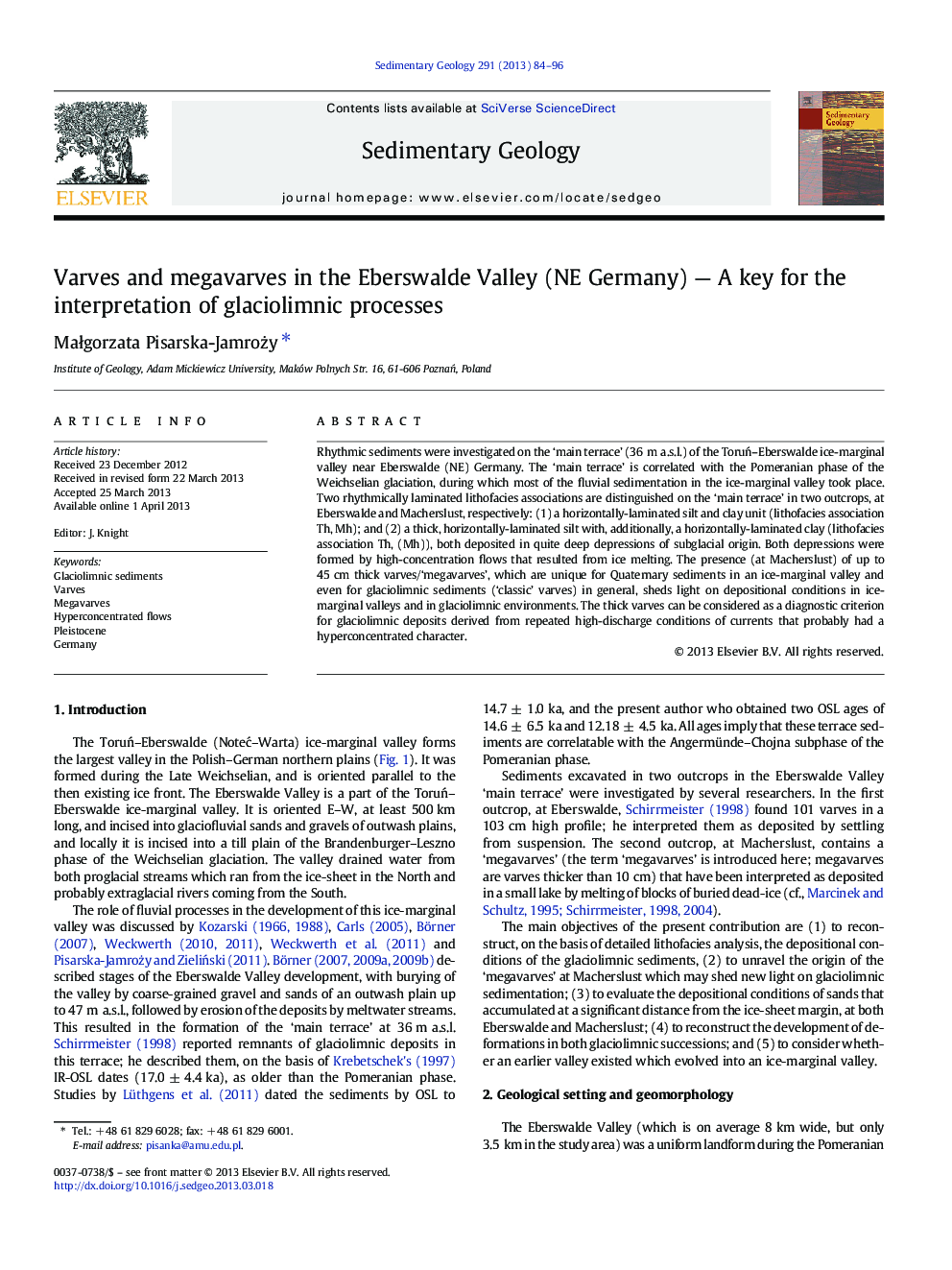| Article ID | Journal | Published Year | Pages | File Type |
|---|---|---|---|---|
| 4689564 | Sedimentary Geology | 2013 | 13 Pages |
Rhythmic sediments were investigated on the ‘main terrace’ (36 m a.s.l.) of the Toruń–Eberswalde ice-marginal valley near Eberswalde (NE) Germany. The ‘main terrace’ is correlated with the Pomeranian phase of the Weichselian glaciation, during which most of the fluvial sedimentation in the ice-marginal valley took place. Two rhythmically laminated lithofacies associations are distinguished on the ‘main terrace’ in two outcrops, at Eberswalde and Macherslust, respectively: (1) a horizontally-laminated silt and clay unit (lithofacies association Th, Mh); and (2) a thick, horizontally-laminated silt with, additionally, a horizontally-laminated clay (lithofacies association Th, (Mh)), both deposited in quite deep depressions of subglacial origin. Both depressions were formed by high-concentration flows that resulted from ice melting. The presence (at Macherslust) of up to 45 cm thick varves/‘megavarves’, which are unique for Quaternary sediments in an ice-marginal valley and even for glaciolimnic sediments (‘classic’ varves) in general, sheds light on depositional conditions in ice-marginal valleys and in glaciolimnic environments. The thick varves can be considered as a diagnostic criterion for glaciolimnic deposits derived from repeated high-discharge conditions of currents that probably had a hyperconcentrated character.
